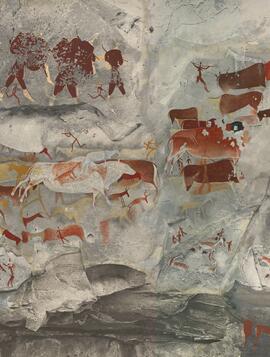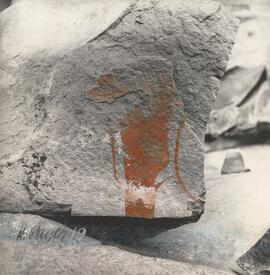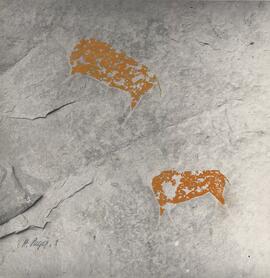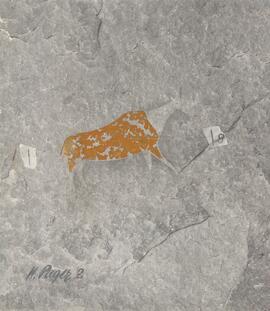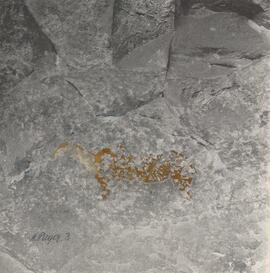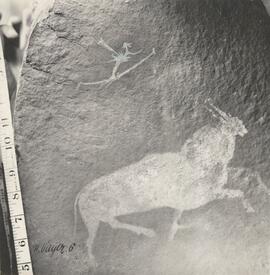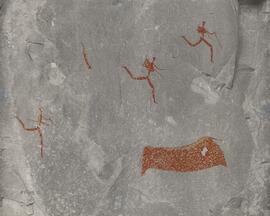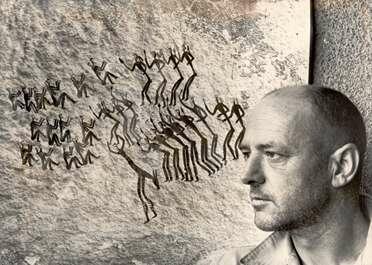Identity area
Reference code
Title
Date(s)
- 07/07/1997 (Creation)
Level of description
Extent and medium
Context area
Name of creator
Biographical history
Created on: 06/02/2003
Amended by: willem
Amended on: 12/02/2003
Name of creator
Biographical history
Background of the Recorder
The Rock Art Research Institute had its small beginnings in 1979 when Professor David Lewis-Williams moved from the Social Anthropology Department at the University of the Witwatersrand to the Archaeology Department. A few years later, in 1983, he started a research project focused on surveying and recording the rock art of the Harrismith district, South Africa. This project was headed by Professor Lewis-Williams, with Bruce Fordyce as the only other researcher, and was funded by the Human Sciences Research Council (HSRC). This project grew and the necessity for interpretation of the rock art, not just finding the rock art sites, became a primary focus. In 1986 the entity became more widely recognized and, through a series of successful projects, achieved Unit status becoming the Rock Art Research Unit (RARU), with Professor Lewis-Williams as the director of the Unit. The HSRC still funded the Unit, and additional funding came from the Centre for Science Development, as well as from Wits University. Some of the people employed (full or part time, or as research students) by RARU are Terence Kohler (1984), Conrad Steenkamp (1984), Paul den Hoed (1984-1985), Zachary Kingdon (1986-1987), Colin Campbell (1987-1988), Thomas Dowson (1988-1994), Anne Holliday (1989-1995), Geoff Blundell (from 1993), Sven Ouzman (from 1993). In 2000, with the Professor Lewis-Williams's imminent retirement, Professor Barry Mendelow, then the Deputy Vice Chancellor, suggested that the Unit be ungraded to an institute. A unit is closed if the director leaves, but an institute can continue under different directorship. Institute status is the highest research status conferred by Wits University, and it was awarded to the Unit to recognise the high level of achievement in research publications and the breadth of research talent built up during Professor Lewis-Williams's twenty-one year directorship. Today the Rock Art Research Institute (RARI) is funded by the National Research Foundation, Wits University's own Research Fund and the Anglo-American Chairman's Fund. Some activities have been and are privately resourced. Dr Benjamin Smith became the new director of the Institute after Professor Lewis-Williams. He is still the director today. RARI is dedicated to developing an understanding of rock art by researching indigenous beliefs, rituals, customs and lifeways. Research is currently underway in all South African provinces as well as in Zimbabwe, Swaziland, Lesotho, Botswana, Mozambique, Zambia, Malawi, Tanzania and Kenya. Research therefore includes the rock arts of San and Pygmy hunter-gatherers, Khoi and Nilotic pastoralists, as well as of African farmers, such as the Chewa and the Northern Sotho. Underpinning this diverse research is a focus on the complex symbolism of African image-making. RARI has become one of the largest specialist rock art institutions in the world, attracting students and researchers from around the world. It is a leading centre for rock art training and offers undergraduate and post-graduate courses in rock art recording, interpretation and management. It is also active in rock art conservation and in the development and management of rock art tourism in South Africa. Included in these initiatives is the establishment of the Origins Centre in 2006 (www.origins.org.za), a world-class museum facility located in Johannesburg on the Wits University campus.
Name of creator
Biographical history
Repository
Archival history
The Ndedema Gorge, where Pager worked, is in the Cathedral Peak area of the Drakensburg. This great valley contains a remarkable concentration of rock paintings. All in all, Pager recorded a total of 3909 individual images in 17 shelters.
Many San paintings are extremely faint and unsuitable for photography. Moreover, the images are often small, measuring only one or two centimeters. When large panels of perhaps a couple of hundred paintings are reduced to a single photograph, these small but imported paintings are virtually invisible. To overcome these and other difficulties, Pager developed a unique recording technique. Using 6x6cm or 6x9cm black and white film, he photographed the rock surface in sections of approximately one square meter. Then life-size black and white prints were made. He took these back to Ndedema Gorge and, working on an easel propped up in front of the paintings, he coloured in the images with oil paints.
Some of the faintest paintings had to be outlined in pencil first. In most instances it was necessary to heighten the colour of the originals. Care was taken to record all flakes and damage to the paintings; the rate of deterioration can thus be estimated. The second stage was to assemble the photographs. Wherever possible, Pager cut the photographs along natural cracks and steps in the rock face and then glued pieces together to form a life size mosaic. The presentation of the actual rock is one of the invaluable features of the collection.
The Ndedema copies are unique in the history of rock art research and extraordinary valuable research resource. In some shelters up to 12% of the images are no longer visible; they have faded into obscurity. The collection is therefore an irreplaceable treasure: part of our national heritage and international importance. Harald Pager's copies were published in 1971 in a book entitled 'Ndedema: A documentation of the rock paintings of the Ndedema Gorge.'
Immediate source of acquisition or transfer
Content and structure area
Scope and content
Date of aquisition from: 07/07/1997
Date of aquisition to: 07/07/1997
Appraisal, destruction and scheduling
Accruals
System of arrangement
Conditions of access and use area
Conditions governing access
Conditions governing reproduction
Language of material
- English
Script of material
- Latin

